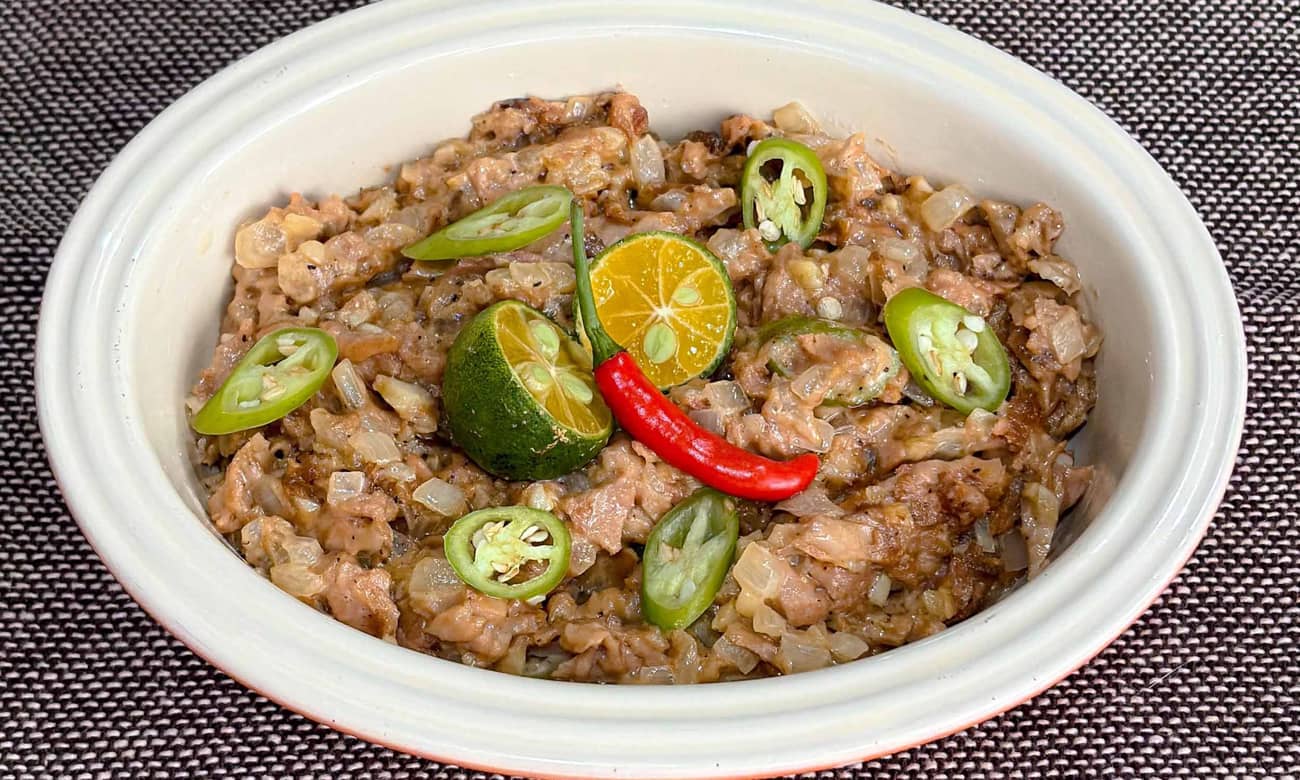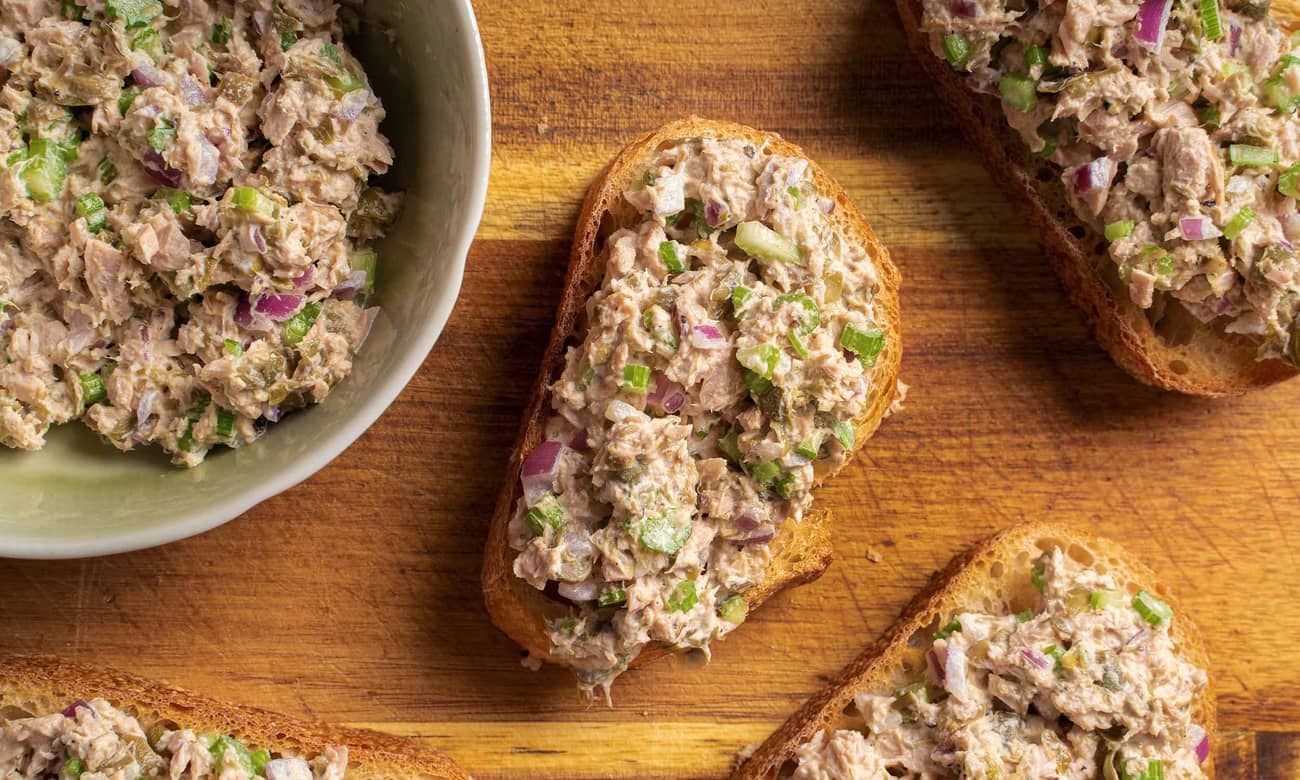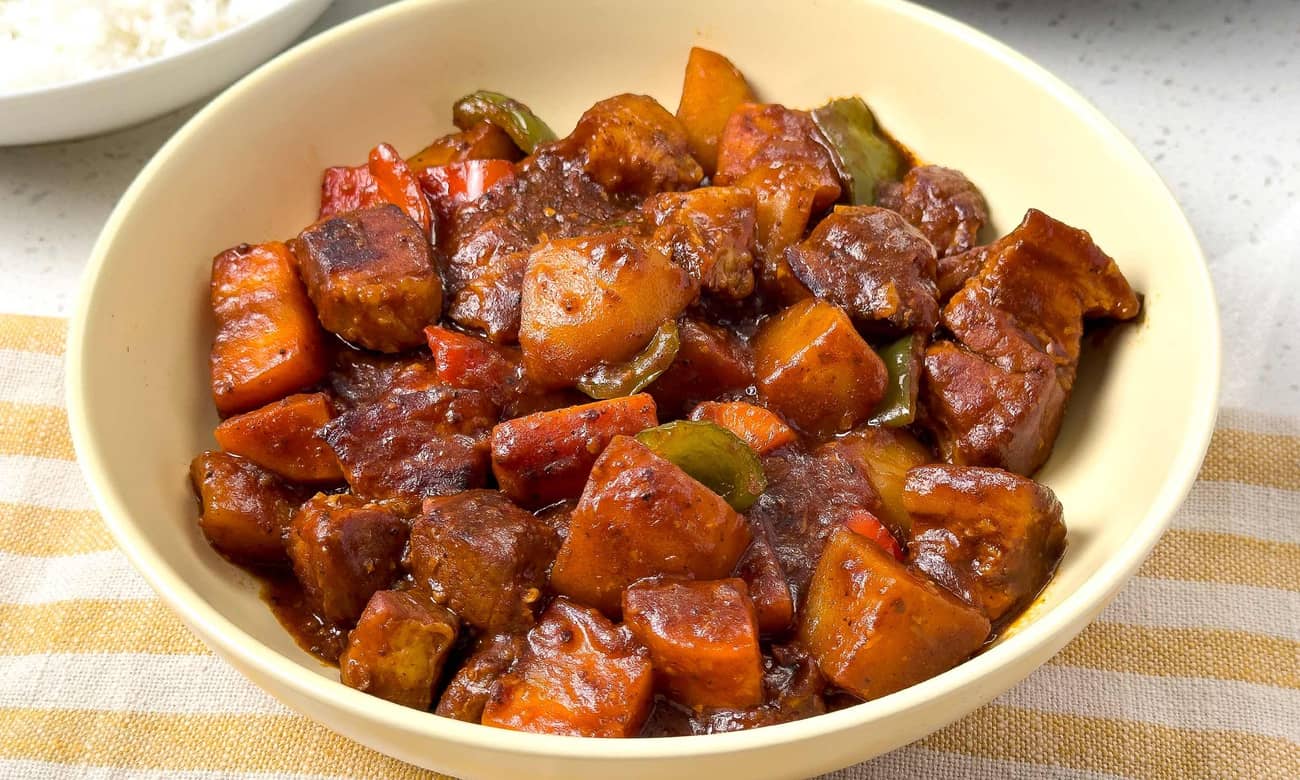
Kinilaw na tuna is Filipino-style tuna ceviche: chunks of raw tuna tossed in a vinegar-calamansi marinade with ginger, onions, chilies, and coconut milk.
Kinilaw is ceviche's Filipino cousin. They share the same premise: a dish of raw ingredients served without cooking or heating (kilaw means to eat fresh). While kinilaw can feature fruits and vegetables, it is often, like ceviche, a seafood dish—usually fish.
In kinilaw na tuna or tuna kinilaw, raw tuna is sliced into chunks and dressed in a marinade of vinegar and calamansi juice. The acids in the marinade “cook” the fish, giving it a firm, opaque exterior while the inside stays raw and translucent.
Kinilaw is tart and refreshing, like sashimi on a Filipino beach trip. Pile on punchy extras like ginger, raw onions, and chopped chilies for extra flavor. Serve it as a zingy companion to grilled meats, or over coconut-cooked rice for a poke bowl situation.
Any firm fish like bangus, tanigue (Spanish mackerel), salmon, and regular mackerel will make great kinilaw.
Because you're serving raw ingredients, you want the highest quality fish you can get. Among commercially frozen fish, your best options are:
While wild-caught seafood sounds sexy, it has a chance of carrying microbes that make it risky to consume raw. We’d save it for inihaw and cooked seafood dishes, where fresh fish shines over frozen any day.
The acids in vinegar and calamansi juice can break down and transform the protein structure in your raw fish. This process is called denaturation, which is the same thing that happens when you cook fish with heat. As the delicate proteins tighten up, the fish gets firmer and less translucent—as if lightly cooked with heat.
But vinegar and calamansi juice can't cook fish all the way through like heat does. While the fish looks cooked on the outside, the inside stays a bit raw and tender. This is the soft, sashimi-like bite you want to enjoy.
We’d say 5–15 minutes is the sweet spot for freshness and texture. For those who like their kinilaw more “cooked”, you can let it marinate for about 30 minutes to 1 hour max.
Take note that the longer your fish soaks in acid, the more denatured it gets, and the mushier it becomes. Don’t let your kinilaw sit past 2 hours!
Make dressing: Combine red onions, ginger, chilies, coconut vinegar, calamansi juice, and patis in a large bowl. Stir together and set aside to tame the sharpness of the aromatics, about 10 minutes.
“Wash” fish: In a separate bowl, “wash” your tuna by pouring the vinegar over the fish and tossing it with your hands. Once evenly coated, discard the vinegar and any juices that have pooled at the bottom. This step removes the fishiness in the raw tuna, resulting in a cleaner flavor in your kinilaw.
You’ll also observe the fish slowly turning from bright red to a pale pink. The vinegar has started to cook the tuna!
Dress and serve: Toss the tuna cubes in the coconut vinegar mixture. Add coconut milk, then toss again until the fish is evenly coated. Garnish with cilantro and serve within 5–10 minutes, while the kinilaw is at peak freshness.
There are no hard rules to kinilaw. Even just a bit of vinegar will get the job done! Use these measurements as a jumping point, then adjust all the liquids, seasonings and aromatics to your taste.


